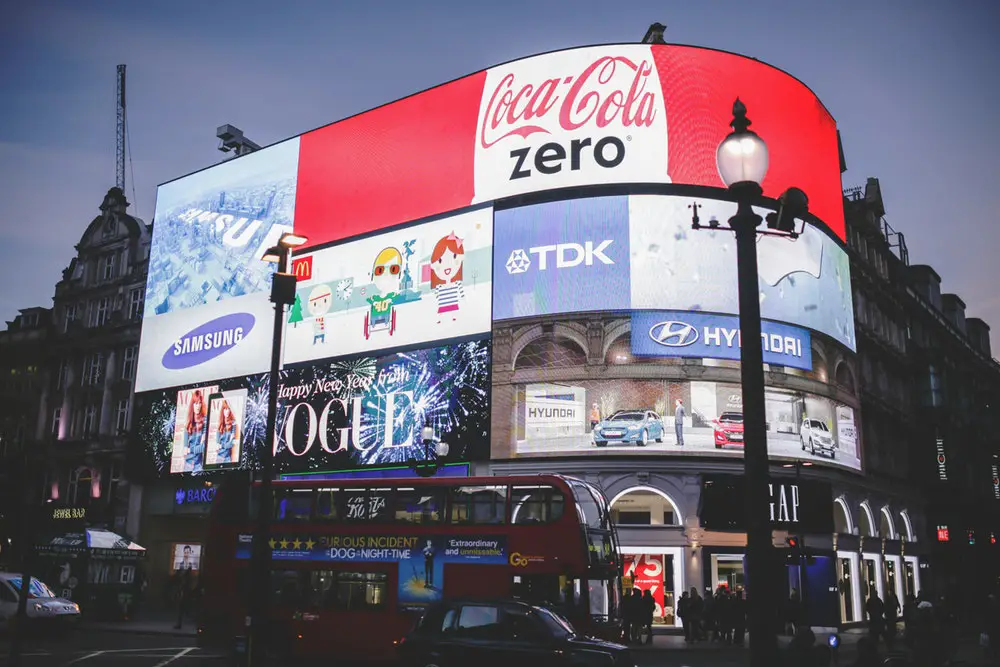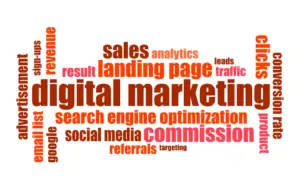Many people think that marketing and advertising are the same things.
But actually, they are two sides of the same coin.
There is a fine line between marketing and advertising, but it’s a fine line that contains too many sections to discuss.
They are the world’s most famous two industries.
So, the question is, do marketing and advertising affect each other?
And what can work better for your business plan?
Answering these questions requires knowing every single detail about both fields, their history, their roles, their
benefits, and the perfect strategies for every field.
So let me shed some light on both careers which may help you in your business’s growth process.
The Marketing

Before getting into defining marketing and advertising, in addition to, their strategies and their principles, you need to know what is marketing?
It is the activity when you try to get customers interested in your brand and its products and services.
It is the true process when you turn the relationships you have been creating into an actual source of income.
Marketing has so many several forms and has a wide-scale too, which depends primarily on the type of the targeted audiences.
And it also can be defined as the art of creating ideas and delivering them to the customers to get them to take
actions like buying your products or even engaging with your brand.
The History of marketing
It started in the early 1990s, and back then it was divided into 2 main periods (Before 1950 and after 1950).
Before 1950: when business owners used to set up strategies and plans to sell as many products as they can,
regardless of what their customers really need and want.
They didn’t care to build a long-term relationship with their audiences or improve the customers’ service.
After 1950: Big companies saw that the old ways they have been using are not making any benefits to the customers.
So, they figured out that, the key to success is to understand your customers, and then to offer them the products and services they truly need.
They came up with what they called (Marketing concept) which through it, efforts are being made.
This concept helped the marketers realize that there is no limit to the efforts and the ideas, and they must have more
to offer for their audiences.
What is a marketing strategy?
It is a plan you set up to define your business’s goals, targets, and how you want to reach out to your customers.
The strategy is also designed to support your after-sales services.
I’m going to give you few examples out of the many strategies we have in this field.
Examples of marketing strategies
Relationship marketing: many businesses owners think that building strong and long-term relationships with their customers is much more effective, than millions of ideas that only support selling the products to them without caring to satisfy their audience’s needs and wants.
Which happens through offering them high-quality services, and giving them the feeling of being heard.
Online marketing: because of modern technologies and social media, this kind of strategy has been known
as the most effective one.
Because you build a strong audience base and communicate with them.
Also, it gives you a chance to promote your business in a very organic way.
Outbound marketing: yes, it is a traditional kind of strategy, but it is good for your customers to sense that they are dealing with real people not with technology.
In which, the marketing process happens through traditional channels, like Tv commercials, printed media (e.g., newspapers, flyers, magazines).
These are few examples of so many strategies that you will only discover while working in this field.
What are the principles of marketing?
This step always comes after setting up your business’s strategy.
So, if you want to give your customers their value and what they need, you have to understand them first.
And the idea behind the marketing principles is to support your products’ promotion strategy.
Generally, there are two kinds of principles, the “4 PS“, and the “7 PS“.
The 7 PS includes:
- Product.
- Place.
- Price.
- Promotion.
- People.
- Physical Environment.
- Process
whereas, the 4 PS only includes:
- Product.
- Place.
- Price.
- Promotion
So, let me discuss the principles of marketing in general.
1. Product
In this stage, you have to ask yourself a very simple and important question, which is:
Are your current products and services which your business offers suitable for the market, and meet what customers really need?
That’s why, at this point, you have to focus on your product’s benefits.
You also, need to know what your customers think about your brand and don’t hesitate to ask for their feedback.
2. Place
You have to ask yourself:
where is the right place to sell your products?
That’s why you need to develop the places where your salespeople meet your customers when they are buying your products.
While there are too many ways to sell your products but in every case of selling, you need to take care when it comes to choosing the right place to sell them, which mainly depends on your type of products.
3. Price
When setting up the price for your products, you are setting the value for your brand, but most importantly your customers must feel that your products are worth these values.
You also have to put into your consideration one important factor, which is, it is not all about the price, the quality also matters.
4. Promotion
This step is all about the promotional activities you decide to take to make people aware of your business and brand.
An awareness campaign can be considered as a move in this stage.
The small changes that you make in your techniques and your promotion methods can cause a total increase in your sales.
According to The Marketing Mix:
”Promotion is a very important component of marketing as it can boost brand recognition and sales. Promotion is comprised of various elements like the sales organization, public relations, advertising, and sales promotion”
5. People
I see this stage, as the most critical step in this methodology.
The word “people” can also refer to your staff, everyone who is involved in your business, and even yourself.
And it is very easy to attract new customers, for instance, by offering an unforgettable experience with your brand, high-quality product, plus, a good customer service system, can help you achieve this goal.
besides, the ability to choose the right employees who will work for your business, and carry out your business’s tasks, can determine the success of your brand.
6. Process
This level is more about delivering your products and your service to the customers.
Having a good processing system will give you a good reputation, that you always deliver your products and services with the same quality and standards to your customers.
7. Physical evidence
The last principle we have is the physical evidence, and it is literally about everything your consumers see in your business and their comments while interacting with you.
And this can include:
- The environment where you sell your products.
- the way you package your products.
- your promotion.
- your whole brand in general.
The advertising

Advertising is a part of marketing, And it is a way of communicating with your customers about your business and brand.
Advertising can come in so many forms such as Posts, paid campaigns, short films, printed ads, videos, tv ads, etc.
What is the history of Advertising?
Like any other powerful tool, advertising has a history that started back in the 19th century, through the ads in the newspapers until the 20th century.
It’s when technology advanced, especially with the invention of television, the radio, and finally the direct mail.
And the first advertisement was a television commercial about the Bulova watch which is an American brand.
That commercial was about 1o seconds long, and it was very simple.
The Advertising types
It’s a well-known fact that there are so many types and methods of advertising, and most of them can suit your business.
So let us take a look at the types so you can decide which is the best for your brand.
1. Online Advertising
Also, it is known as digital advertising.
It is a form where your message is delivered via the internet.
This kind of advertising is so effective that you can control everything about a specific ad starting from the people you are targeting to their age and interests.
It is so cheap in comparison with the other traditional types.
But it has a major disadvantage that people may not click on your ad.
2. SMS Advertising
It is a very traditional method, and it is also called “Mobile advertising“.
With it, you can tell all that you need about your products in a text message.
3. Radio
These ads are the ones that you can hear all day long through radio waves.
Some people consider it not effective anymore, but still, so many people prefer to listen to the Radio.
4. Printed Ads
It’s the most well-known type and the most expensive one.
It was used before the days of television.
The main disadvantage is that the life cycle of the ad is extremely short.
5. Outdoor Ads
It is all about displaying large posters and banners with your ad on it on the side of the road.
Recently it has been replaced with “digital ads” instead of printed ads.
In which the advertisement is in a form of a very short video that changes every few seconds to show a different product or service from plenty of advertisers.
And recently there is a new type called “Outdoor Blank Space Ads“, and by blank space, it means the spaces in buses, metros, etc.
This new form of advertising allows you to reach out to more people easily.
Actually, there are so many forms of ads, but what has been mentioned are the most famous ones.
Marketing and advertising strategies to build your brand

1. Target your audience
It is a number 1 rule when it comes to setting up your strategies.
You need to know that the products or the services you are willing to market or advertise don’t suit everyone.
You have to set for yourself a large base of consumers which is based on the data you are collecting about your audiences.
2. Measure and track
Many businesses owners don’t know if their marketing and advertising are working or not.
The social media platforms such as Facebook afford you a chance to analyze your campaigns.
This is a must step because you need to know if your work is paying off or not.
And if you work offline, then you have to communicate personally with your customers by getting their addresses or even their numbers.
3. Know when to start
When it comes to marketing and advertising knowing your budget is not enough.
You also have to know when you launch.
For example, if you sell a specific “Seasonal product“, you have to market and advertise for them at a particular time, not a little bit earlier or a little bit late.
4. Create your character
You need to reach a high level of branding of your business, that when your customers see your ads, they must know immediately that it is your products.
And this can be achieved through, the concepts, your logo, the color pallet you are using, and many other details which are related to branding that must identify you.
5. Appear in the right places for you
This stage requires you to go out to where your customers are and ask them for a survey.
You need to know if they prefer the online or the offline ways, what kind of social media platforms they are using, and if they have a specific radio show they regularly listen to it.
It is also a very important stage because if you are marketing at the wrong places, then you are absolutely wasting your time and your money.
The difference between marketing and advertising
After reading those strategies you will realize that advertising is a part of marketing.
Marketing is a larger and more controlled concept, and it works on how to make your products appear in the market, while advertising goes straight to a specific step in marketing.
Marketing methodology depends on both research and practice but advertising depends on practicing only.
The conclusion
Marketing and advertising are very common methods in the market, and advertising is a part of the marketing process.
The principles of marketing are very important and they help in setting your plan.
there are many forms of advertising, and each of them has its advantages and disadvantages so you have to pick the perfect type that fits your business.
FAQs
What is marketing?
It is the activity when you try to get customers interested in your brand and its products and services.
What is a marketing strategy?
- It is a plan you set up to define your business’s:
- Goals.
- Targets.
- and how you want to reach out to your customers.
- such as Relationship marketing, Online marketing, etc.
What are the principles of marketing?
- Product.
- Place.
- Price.
- Promotion,
- People.
- Physical Environment.
- Process.
What are the types of advertising?
- Online Advertising.
- Radio.
- Printed Ads.
- Outdoor Ads, etc.
What are the marketing and advertising strategies?
- Target your audience.
- Measure and track.
- Know when to Start.
- Create your character.
- Appear in the right places for you.
What is the difference between marketing and advertising?
- Marketing is a larger and more controlled concept, and it works on how to make your products appear in the market.
- While advertising goes straight to a specific step in marketing.
- Marketing methodology depends on both research and practice.
- But advertising depends on practicing only.











